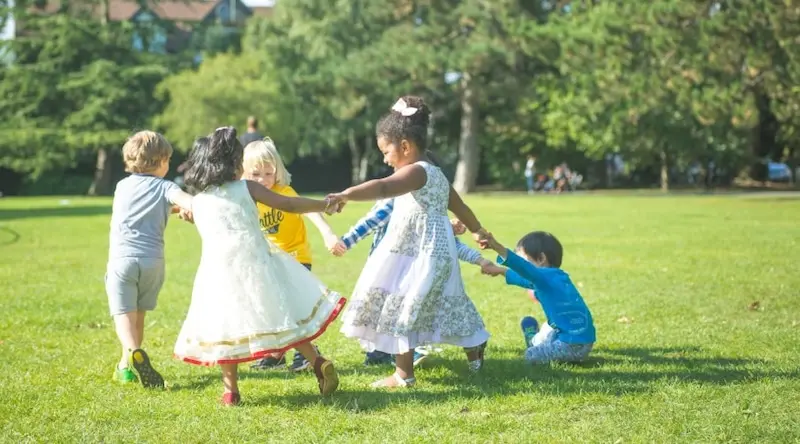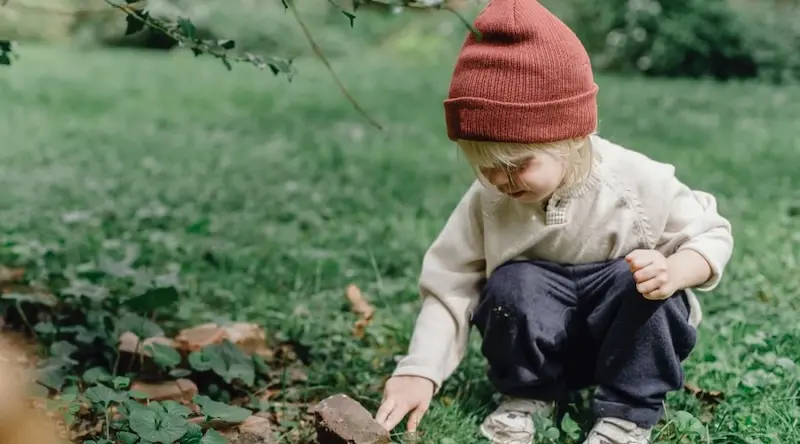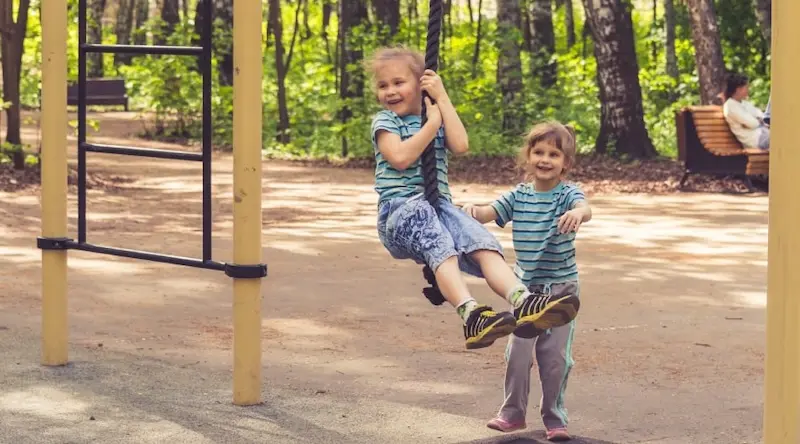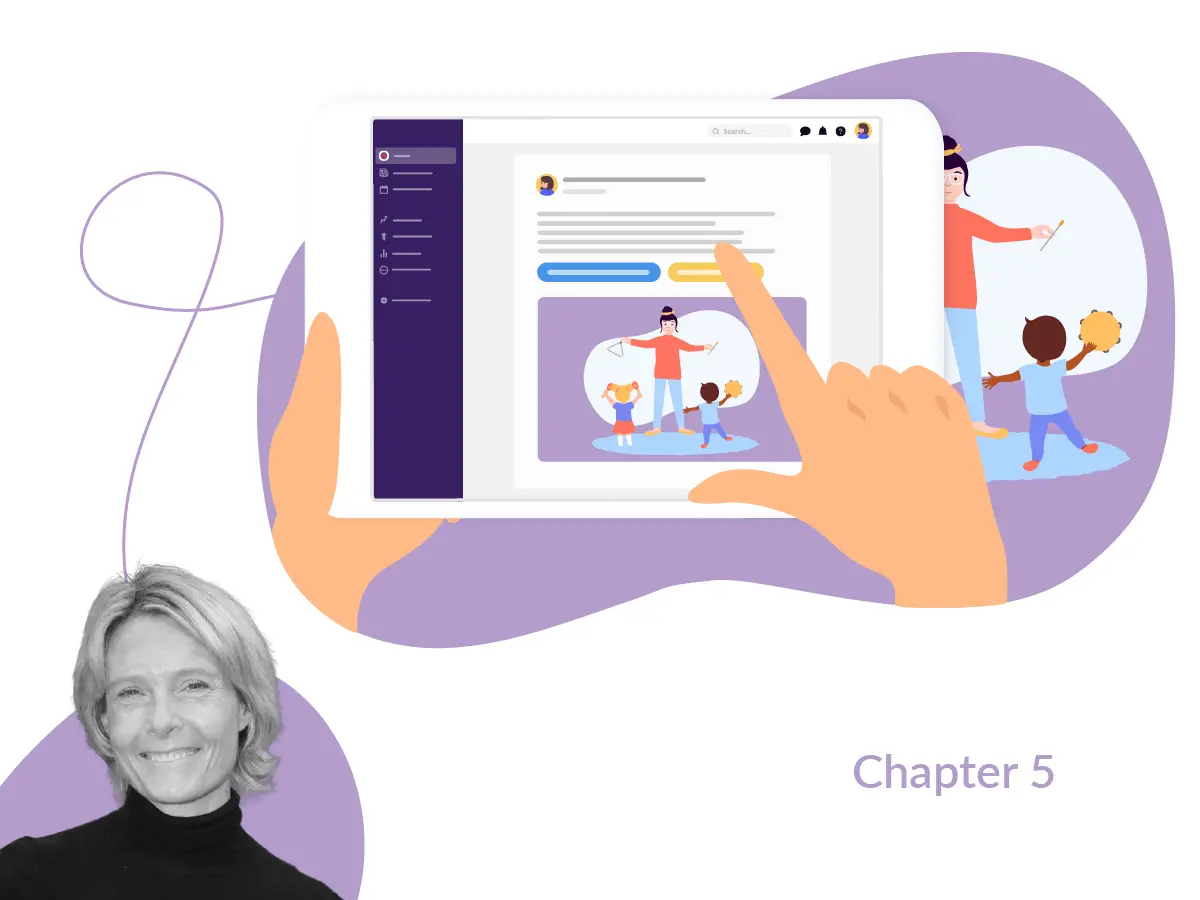settings
children
With Famly since
In the 12 years since opening their doors, Young Friends Nature Nursery has strived to steep their setting in sustainability.
You’ll find ratatouille, sweet potato curry and homemade bread on the setting’s plant-based menu. Children compost their food scraps, and visit the garden that grows vegetables for the kitchen. Four guinea pigs and a rabbit call the nursery home, too.
And for Louise Lloyd-Evans, Director and owner of Young Friends Nature Nursery, the new EYFS framework lets her team embrace their environmental focus even more.
“This new framework lets us hone in on how we reflect our own ethos and values in our curriculum, and how that connects with the activities and experiences we provide,” Louise says. “I think it’s an opportunity for us to think more holistically about the child.”
Here’s how Louise sees potential in the coming EYFS framework, and her best advice for how you can help prepare for the transition.
The big ideas
Young Friends Nature Nursery’s 5 big ideas for adjusting to the new EYFS
- You’ve now got more room to build up your own curriculum. Now’s a great time to reflect on the big-idea ‘why’ behind what you do. Famly’s upcoming reference material builder makes it easy to weave those values and your curriculum into your daily practice.
- To help practitioners make open-ended observations, plan for some CPD. Extra training on child development, particularly play schemas, helped Louise’s staff move away from tick-list observations.
- Assessments are for scaffolding extra support, not catching delays. Louise and her team try to cut down on assessments by having more regular, small-scale reflections on children’s growth. The “What’s Next” observation feature can be great for this.
- Want to cut out the guesswork for what parents want? Send out a survey. When managing parents’ expectations around the framework transition, Louise says surveys can be a great way to get a direct answer for what parents want to know.
- Send activities home to help parents see the full picture of children’s learning. Especially as we move away from tick-list observations, Famly’s Activity Library can be a great tool in helping parents see the bigger picture of the little ones’ learning journeys.
1. It’s time to revisit what your curriculum’s all about
- Give your team time to realign on what your curriculum means, and how to put it into practice.
- Louise set aside a day to help her team understand how that might shift with the new EYFS.
- Famly’s curriculum builder will give you more tools to share your curriculum with parents.
Because the new EYFS framework eases requirements for logging observations and tracking progress, you’ve got more room to grow your own vision of the Early Years experience. For Louise and the Young Friends team, that offers more opportunities to build sustainability-focused activities and values into their provision.
That started with making sure her 20 teachers agreed on what their curriculum really means, and how they put it into practice.
“We wanted to help our staff connect with what our curriculum is, and how it relates to the new EYFS. So we had a big brainstorming day, where everybody was all over the nursery with markers and paper. We gave them different parts of the EYFS (like Communication and Language), and we drew up charts to explain how we connect with these, through nature, sustainability and our activities,” she says.
In September, Famly will launch our new reference material builder, which will make it easier to integrate your own curriculum and learning values into your daily practice. It’ll be a way for you to add simple prompts, or even your whole curriculum to the reference material section, allowing your practitioners to look it over while they make observations. You’ll be able to select your own broad areas of learning that you want to tag in observations or assess against, too.
“We’re looking forward to the curriculum builder, so that we can use Famly’s flexibility to relay children’s stories about their day, detail adult’s roles in learning, and have more tools to help share those learning experiences with parents at home,” Louise says.

2. To move away from tick-lists, help staff form closer bonds with children
- Focusing on play schemas has helped Louise’s team make more open-ended observations.
- When implementing professional development, Louise recommends a gradual approach.
- Using mixed-age groups and smaller bubbles can also help practitioners make sharper, more personal observations.
As we move away from statement-based tracking, Famly’s platform no longer offers the option to tick off specific milestones when recording observations. For some practitioners, making more open-ended observations might take some getting used to.
To ease this adjustment, Louise and the team have been holding training sessions, group discussions, and one-on-one chats to brush up on their child development knowledge. In particular, they’ve found it helpful to spend time focusing on children’s play schemas. This has given the team more confidence in recording observations outside of a tick-list framework.
As Louise points out, however, it’s best to take a gradual approach.
“At the start, we probably fed our team a few too many articles and training sessions. Some of your team members are only 18 or 19 years old, so the Early Years isn’t their whole lives, like it might be with older practitioners,” she says. “We’ve gotten better at simplifying things, and making our training as understandable as possible.”
Another strategy to strengthen observations is using mixed-aged groups. Initially implemented as a COVID safety precaution, Louise noticed that having mixed-aged family groupings and a designated teacher produced sharper, more personal observations.
“Children have now got the same key person from infancy to age four, so the practitioners get to know those children and their families really well,” Louise says. “It just makes the whole observation process more meaningful, because they feel much more responsible for those children, and they know them far better.”

3. With more daily reflection, you can make assessments less necessary
- Louise says assessments aren’t tools for catching “delays,” but for scaffolding support plans.
- She uses them on a “needs basis” — her team only creates in-depth assessments if they feel a child needs extra support in certain areas.
- Daily reflections and small-scale adjustments can make big assessments unnecessary.
At Young Friends Nature Nursery, Louise has been working to reduce the number of assessments she and her team fill out. Through smaller, daily reflections on their practice, bigger assessments become less necessary.
Before filing assessments and progress reports through Famly, the Young Friends practitioners hold daily meetings to discuss children’s growth, and to address potential needs. Smaller interventions come first, which the team can note using Famly’s “What’s Next” feature in the new observations screen.
“If we’re concerned about a child, we’d get another staff member or our qualified SENDCo to come in and spend some time with that child, to see if those initial observations are correct. Then we would discuss it as a team, and meet with parents, sensitively, to put in place a support plan if we think it’s needed,” she says.
That’s when Famly’s progress reports come in. The Young Friends team use them as a scaffolding tool, to lay out a support plan. If the team is satisfied with a child’s development, they give them a more straightforward, pared-down progress report.
With the updated Famly platform, you’ve got more room to scaffold this support as you see fit. You can toggle age bands on or off, write your own descriptions for how children are progressing, jot down notes, and even change the colours denoting a child’s progress on their own learning journey. All this gives you more room to match your Famly platform to suit your own pedagogy.

4. For parent communications, being proactive can cut out lots of guesswork
- In Louise’s experience, parents haven’t been closely tuned in to the new EYFS framework.
- Still, it’s worth reaching out to parents to explain what to expect from the new framework.
- Louise often uses surveys to hear what parents want, or learn how they’re feeling about any changes at her setting.
While the new EYFS framework has been the talk of the Early Years sector for months now, Louise hasn’t noticed that the buzz has reached parents quite yet.
“I don’t think many parents have really been tracking this framework shift closely. It doesn’t tend to come up unless we bring it up first,” she says.
Her team is preparing a statement for parents to help brief them on the new framework, and how it might affect the focus or scope of what practitioners share through Famly.
When it comes to managing parents’ expectations, Louise often makes use of surveys and questionnaires to get parents’ input, which can help shape policy decisions at the nursery. She creates these via Surveymonkey, and shares them through Famly’s news feed.
During the first lockdown, surveys helped the team zero in on what sort of updates were most meaningful for parents. Louise expects to use the same strategy to help parents adjust to the new EYFS framework, too.
“When families were isolating at home, we used Famly to give more in-depth feedback and insight into what was happening in the nursery. Now that we’re transitioning back, we’re sharing more photographs, and simpler things to give a quick glimmer of what’s going on,” she says. “For the most part, they just want to know their children are happy, and making friends.”

5. How the Activity Library helps parents see their children’s learning in action
- Some parents might worry that moving away from statement-based observations gives them fewer glimpses into their child’s day.
- Louise recommends Famly’s activity library as a tool to help share that learning at home.
- The best activities to send home are simple, and use materials parents have already got handy.
With the new EYFS framework, some providers might find it challenging to keep giving parents enough “proof” of a child’s learning experiences throughout the day. At Young Friends Nature Nursery, Famly’s activity library has been an important tool for making sure the day’s learning follows children home.
“We’ve been building up our own activity library, so it becomes a rich resource to communicate the value of what we’re doing and learning each day,” Louise says. “We want to get more parents to engage with these activities, as iIt’s a nice way to help share our nursery’s ethos and activities with everybody at home.”
Especially during lockdown, Louise and her team were careful in not overwhelming parents with activities. The best ones to send home are easy to set up, and use materials that most households already have on hand.
“We don’t even need to connect them to learning goals and all that, because the most important thing is just to engage children with their parents. If we give them simple things to do together, the social, language and developmental learning will come naturally,” Louise says.
Get a personal demo now
Get a guided 1-on-1 tour of the whole platform. See what features are the best fit for you, and ask us as many questions as you like.
Book free demo










